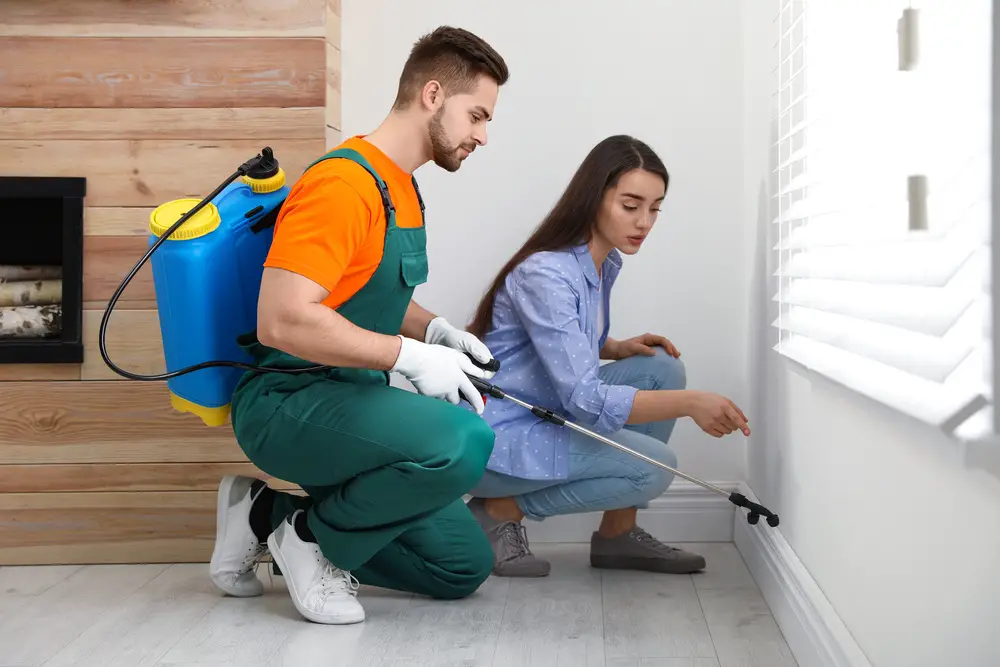A pest infestation can lead to a decline in your family’s health and overall home value. If left untreated, they can easily destroy your home’s appeal and your family’s comfort and safety. Pests can be harmful to your health and your home’s environment, but they’re also just plain gross. And the nuisance that comes with them will leave you feeling stressed and antagonized.

It’s crucial to apply pest control to alleviate the issue early. Whether you’re thinking of doing the solutions yourself or relying on a professional team, it’s time to act fast. You can do your research and see which solutions work best. For instance, if you have termite problems, bifenthrin or fipronil are common pest control treatments you should try at home or other affected premises for the convenience of everyone.
No matter what pests you have, you can deter them away by applying the following pest control tips and practices.
1. Apply Pest Control Methods
You should take immediate action when you discover a pest intrusion. One effective technique to keep pests at bay or eliminate them altogether is applying pest control methods, like something from Turner Pest Control. They can either be done through the use of biological or chemical methods. It’s important to learn how each method works to see which one is ideal for your home:
-
Biological Methods
Using living organisms to control pests is known as biological pest control. Predators, parasites, and pathogens all fall under this category. Many homeowners would go for this solution since no toxic chemicals are involved in the pest control process. It means it’s safer for people to use and won’t harm the environment. However, this method requires more time to work. Effects are gradual (or may not work), and you may risk having more pests infiltrate your household before the effects show up.
-
Chemical Methods
On the other hand, chemical pest control makes use of pesticides and repellants. Harmful pests and insects can be eliminated almost instantly using this procedure. Many pest control service providers would suggest this option since the results are timely and effective. However, they come with risks to human and environmental health. The key is to ensure the safe and right ways to utilize such strong chemicals. Hence, it’s best to leave this method implemented by the pros than yourself.
In both cases, you should have sufficient knowledge about pest control methods before you choose an approach. Identify the pest, then know how it spreads and the damage it causes. The next step is to determine which method to use and the conditions needed to be effective.
2. Seal Gaps
Pests and small insects would usually find small holes to crawl into. Therefore, inspecting your home for any small gaps and holes is important. Check all your electrical boxes and pipes to see if some gaps might be a place for pests to sneak into. Using expanding foam insulation or caulking can prevent bugs and rodents from entering those areas.
There are many tiny pest passageways in the walls of your home, even though they may appear solid. Look into all the entryways and walls and seal any gap you see. Aside from using caulk, you may clog the gaps with old rugs on the ground if permanent sealing is not an option.
It’s important to examine what kind of pests are commonly found in your home and see whether they can penetrate or go through your gaps. Don’t forget to check your exhaust fans, heater, air conditioner, and ventilation systems, as pests can pass these passages for these items.
3. Regularly Clean Drains
Pests usually love to thrive in wet areas like your drainage. Unfortunately, gunk and debris often clog up drains in sinks and floors. Small flies, in particular, can breed in this area and attract pests. The best way to mediate this issue is to clean or flash down your drains regularly.
Include all the drains from all the bedroom toilets to your laundry room. There are organic solutions to unclog drains. For instance, you can use homemade drain cleaners, such as baking soda and vinegar. Simply spill 1/2 cup of baking soda, and go next with 1/2 cup vinegar. Plug your drain and let it sit for an hour. Then unplug it to pour the boiling water, and repeat until it’s clear. Otherwise, you can also find commercial products from hardware that will help clear up your drains.

4. Maintain Your Home’s Cleanliness
A clean house is much less appealing and hospitable to pests. While this tip is a no-brainer, it should be emphasized more. To keep pests away, you should maintain the cleanliness of your home. It means you should throw away all your garbage and kitchen rubbish as soon as possible. Don’t let them accumulate inside your home.
Avoid leaving leftover foods on kitchen counters or sinks. Remove all scraps in your sink’s drains. Wipe all your surfaces with a washcloth, and sanitize everywhere regularly. You should also clean and organize your fridge to prevent mold and bacteria. Finally, sweep and mop your floors. It’s best to use bleach solution once in a while to deter pests like ants and bugs.
Conclusion
When controlling pest manifestation in your home, you’ll be faced with two options: doing the solutions yourself or hiring professionals. The key is to know when to hire a contractor and when to do it yourself. While the latter can be applicable and effective sometimes, the former is more advisable when cases are more serious and rampant. Hopefully, you’ve found the tips above helpful in maintaining a pest-proof home. Apply these steps to keep your family safe and healthy and maintain your home’s good condition.



